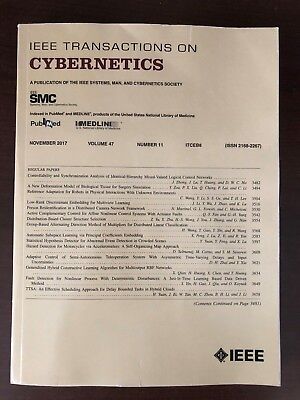基于差异化学习的同质平稳性和异质非平稳性多重剥离过程监控。
IF 10.5
1区 计算机科学
Q1 AUTOMATION & CONTROL SYSTEMS
引用次数: 0
摘要
工业过程中的非平稳性,受设备老化和上游负荷需求变化等因素的影响,固有地表现出异质特征。这种复杂的均匀平稳性叠加给过程监测和分析带来了很大的困难。因此,本研究提出了一种新的模型(Hs-Hn)来剥离同质和异质非平定性,该模型由四个部分组成:差异化学习网络(DL-Net)、剥离网络(Pe-Net)、自适应重加权网络(AR-Net)和全局解码器网络。DL-Net基于对网络训练过程中功能专门化和内容学习的认知理解和推导,利用一种新的对独特输入的差异化学习方法获得差异化表示。其目的是最大化功能多样性和最小化内容重叠。此外,Pe-Net从每个微分尺度中提取平稳性和非平稳性(S-N)分量,并将其表述为具有集成的单位减法跳过连接的编码器-解码器-编码器架构。最小-最大S-N约束调节剥离过程并控制提取的内容。AR-Net还细化了每个尺度上的均匀平稳性,并重新加权了各个成分,以自适应地调整它们的贡献。最后,将重新加权的分量融合并输入到全局解码器中,以促进无监督学习。三个过程的实验结果都证明了Hs-Hn的有效性。本文章由计算机程序翻译,如有差异,请以英文原文为准。
Multipeeling of Homogeneous Stationarity and Heterogeneous Nonstationarity With Differentiated Learning for Process Monitoring.
Nonstationarity in industrial processes, guided by factors, such as equipment aging and changing upstream load demands, inherently exhibits heterogeneous characteristics. This complex overlay of homogeneous stationarity poses great difficulty in process monitoring and analysis. Therefore, this study presents a new model (Hs-Hn) that peels the homogeneous and heterogeneous nonstationarity, which has four components: a differentiated learning network (DL-Net), a peeling network (Pe-Net), an adaptive reweighting network (AR-Net), and a global decoder network. DL-Net obtains the differentiated representation by leveraging a new differentiated learning approach to unique inputs, which is based on the cognitive understanding and derivation of functional specialization and content learning during network training. The aim is to maximize functional diversity and minimize content overlap. Furthermore, Pe-Net extracts the stationarity and nonstationarity (S-N) components from each differentiated scale, formulated as an encoder-decoder-encoder architecture with an integrated identity subtraction skip connection. A min-max S-N constraint regulates the peeling process and controls the extracted content. AR-Net additionally refines homogeneous stationarity across each scale and reweights the individual components to adaptively adjust their contributions. Last, reweighted components are fused and input into the global decoder to facilitate unsupervised learning. Experimental results on three processes demonstrate the effectiveness of Hs-Hn.
求助全文
通过发布文献求助,成功后即可免费获取论文全文。
去求助
来源期刊

IEEE Transactions on Cybernetics
COMPUTER SCIENCE, ARTIFICIAL INTELLIGENCE-COMPUTER SCIENCE, CYBERNETICS
CiteScore
25.40
自引率
11.00%
发文量
1869
期刊介绍:
The scope of the IEEE Transactions on Cybernetics includes computational approaches to the field of cybernetics. Specifically, the transactions welcomes papers on communication and control across machines or machine, human, and organizations. The scope includes such areas as computational intelligence, computer vision, neural networks, genetic algorithms, machine learning, fuzzy systems, cognitive systems, decision making, and robotics, to the extent that they contribute to the theme of cybernetics or demonstrate an application of cybernetics principles.
 求助内容:
求助内容: 应助结果提醒方式:
应助结果提醒方式:


